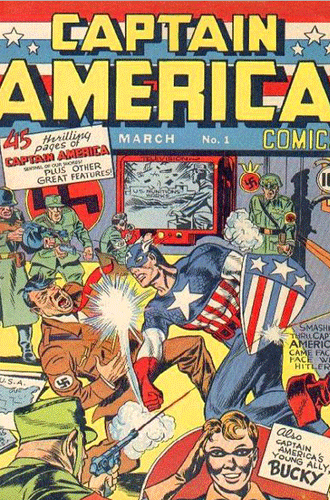The Cap wasn't always so marvellous
The new Captain America film is a hit but, says Giles Brody, the super soldier's last outing provides a cautionary tale

Your support helps us to tell the story
From reproductive rights to climate change to Big Tech, The Independent is on the ground when the story is developing. Whether it's investigating the financials of Elon Musk's pro-Trump PAC or producing our latest documentary, 'The A Word', which shines a light on the American women fighting for reproductive rights, we know how important it is to parse out the facts from the messaging.
At such a critical moment in US history, we need reporters on the ground. Your donation allows us to keep sending journalists to speak to both sides of the story.
The Independent is trusted by Americans across the entire political spectrum. And unlike many other quality news outlets, we choose not to lock Americans out of our reporting and analysis with paywalls. We believe quality journalism should be available to everyone, paid for by those who can afford it.
Your support makes all the difference.Captain America is unbeatable. Last weekend the chemically enhanced super soldier knocked Harry Potter off the top spot at the US box office and, judging by its opening weekend in the UK, his new film is set to be the blockbuster of the summer.
His studio, Marvel, has recouped most of its £85m budget and the film's lead, Chris Evans, can finally forget his other Marvel franchise (the woeful Fantastic Four in 2005). But there was a time when the "Cap" wasn't beating all comers in the cinema. There was a time when he couldn't even get into the cinema.
Back then, Captain America's biggest foes were not Nazis or evil scientists, but shaky film financiers. In 1990, 21st Century Film made a Captain America film starring JD Salinger's son, Matt. The project came about when the producer Manahem Golan was given the rights to Captain America as part of his severance from Cannon Films, a company he had run with his cousin, Yoram Globus. Together they earned the nickname "the Go-Go Boys", for their fast and cheap film-making.
Then Golan couldn't afford a rights payment, which meant that unless he did something with the property, the title would revert to Marvel. The director Albert Pyun had read Stephen Tolkin's Captain America script. A lifelong fan, he convinced Golan that he could make the film on a relatively small budget of $6m and assured him that it would be made before the looming expiry date.
Many actors were considered for the hero, including Val Kilmer, Arnold Schwarzenegger and the American footballer Howie Long. The role eventually went to Salinger, who initially turned it down over funding concerns, on the advice of his lawyer. Joining him were Deliverance alumni Ronny Cox and Ned Beatty, with Scott Paulin playing Red Skull, the villain with a dastardly plan to control the president's brain.
Everything was falling into place, but for one thing. "They just ran out of money," Salinger said, in a recent GQ interview. "It was a lot of well-intentioned people that loved the story and loved the character and wanted to make a good film and just weren't able to."
Pyun told Las Vegas Weekly: "It was a miracle the production didn't shut down or fall apart. There was a day when we ran out of film and couldn't buy any more."
Golan sent his producer, Tom Karnowski to different countries with a suitcase, to pick up cash. On the days when they did have film, there was a niggling feeling that what they were making looked a bit too daft, even by superhero standards. Pyun's plan of casting two Steves – a pre-serum weakling and a post-serum man mountain – was nixed by Marvel. The latex and foam jumpsuit used was so constricting that Salinger lost a stone from overheating, making the sickly Steve bulkier then his chemically enhanced alter ego. The Captain's mask resembled a stretched swimming hat with a fridge magnet "A" on the front and rubber ears glued to the sides. Salinger wore it with all the enthusiasm of someone tricked into going to a black-tie event in fancy dress.
Indeed, there is nothing particularly super about this Captain. He spends most of his time retreating. He feigns car sickness twice, to rob cars. Even the elderly president he is sent to rescue proves more adept at beating up the bad guys.
The film was shot entirely in Yugoslavia – set-pieces in Alaska and California were abandoned. Action sequences were cut or deleted. Money was scrambled together for reshoots but they were not enough to help what Entertainment Weekly called its "shapeless blob of a plot".
The film convinced Salinger that he would be better off behind the camera, as a producer. He offered to perform a cameo in the new film but was defeated by scheduling. Today, the old Captain is philosophical about his time as a superhero. "Maybe future superhero movies were a little bit better because of the mistakes that were made".
To see how far the Captain has come, Albert Pyun's 124-minute Director's Cut of 'Captain America' is available from his www.pyun.com; 'Captain America: The First Avenger' is in cinemas nationwide
Join our commenting forum
Join thought-provoking conversations, follow other Independent readers and see their replies
Comments